Here’s that one thing you need to understand if you want to run a successful skincare brand — your customers don’t want your moisturizer. They want that lit-from-within, effortlessly beautiful skin. In this marketing guide, we’ll teach you how to promote your skin care business and sell this aspiration.
To make it in the beauty industry, you need to get serious with your marketing strategy for cosmetic products. If you want to dropship skincare products, the competition gets even more fierce.
The global market for skincare products is expected to be worth $155.8 billion by 2021. There will be lots of brands that want a slice of the pie.
But don’t worry. Having worked with more than 100,000 Shopify store owners, we know what kind of marketing brings the best results for entrepreneurs in e-commerce. Now, we share our knowledge with you.
Want to sell more? Let’s dig in!
1. Define your target market for skincare products

Starting a skincare business? Your first task is to understand your market’s needs.
Are you going to target teens who are searching for skincare products to clear up their acne? Or is it millennials who are after that dewy skin look? And what about the older demographic on the lookout for anti-aging solutions?
The point is, you need to narrow down your product niche so you could have a focused beauty brand strategy.
Bear in mind, your niche doesn’t necessarily need to be defined by age. On the contrary! You can target all age groups if you have a unifying idea in your industry.
Maybe you only sell skincare products that are made just from five ingredients or less? Or maybe you focus on customers with rosacea? In the beauty industry, your options are limitless.
2. Research your consumers’ needs
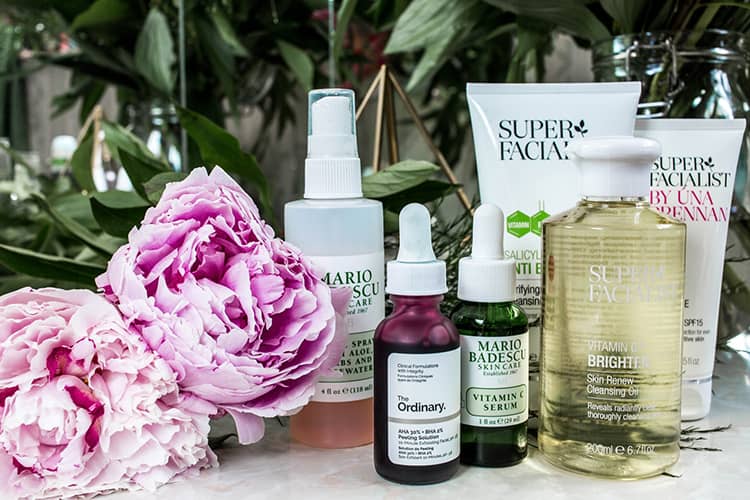
Once you’ve defined your target market, you’ll be able to move forward to the next stage of your skincare product marketing strategy – research.
These are the key things you need to find out about your customers:
- What are their main needs for skin care?
- What ingredients are important to them?
- Where do they get their information about skincare products?
Get a list of keywords
There’s no better place like Google to get your answers. All you need to do is a little keyword research. It’s easy, we promise!
The simplest way to start is to take your main topic, for example, “skincare products for acne,” and type it into Google.
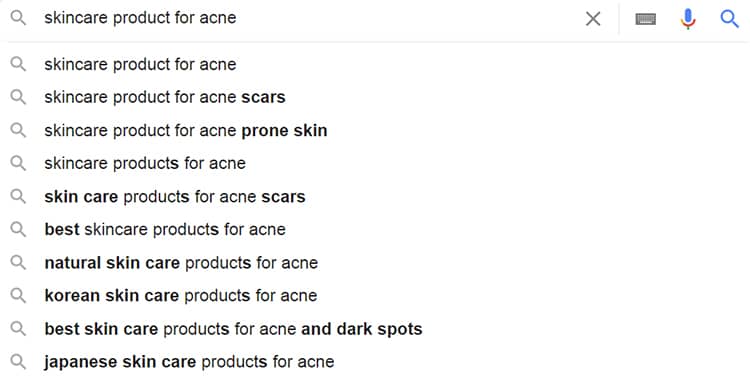
BOOM! You get a bunch of subtopics that Google suggests automatically based on what potential consumers search. Write them down - these are your first leads for your beauty marketing campaigns.
Repeat the same process with each of those subtopics and see what else comes up on Google. Experiment. Your goal is to create a starting list of topics that you can later build on with more elaborate tools.
The next step is to analyze your keywords a bit further.

You need to understand how valuable your keywords are – they have different search volumes and search intent.
A free tool like Google’s Keyword Planner will be more than enough for the task. It’s easy to use for beginners and is free.
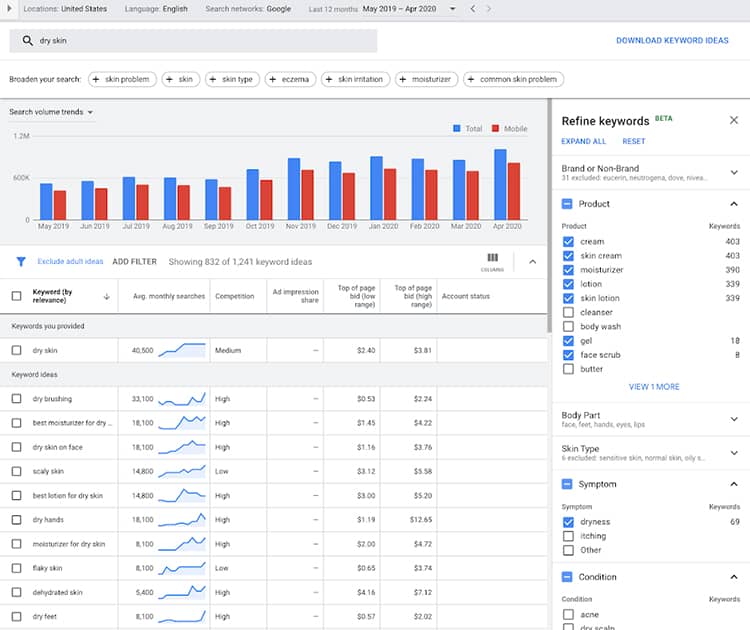
- Take the list of keywords from your initial Google search and check them one by one on Keyword Planner.
- Look at how often consumers search for your keywords and what are other popular related terms.
- Prioritize your final list of keywords according to their search volume and search intent. Do people want to find information or buy a product?
PRO TIP: Look for niche keywords. For example, don’t just search for “skincare” if you’re dropshipping organic skincare. This way, you’ll get in front of people who are more likely to purchase your products.
And voilà! You know what your customers want. Now you only need to sell it.
Use the keywords in your:
- Product pages.
- Google Ads campaigns.
- Blog posts.
- Videos.
Keyword lists are also the basis for a content marketing campaign if you want to run a blog on your website.
3. Where to sell skincare products online?
Choosing the right channels to sell your skincare or cosmetic products is an essential task for beauty brands. After all, why bother with all the fancy marketing campaigns if they’re not reaching your potential consumers?
Drive your sales with ads

Paid advertising helps you get your products in front of millions of shoppers ready to buy. And here’s the best thing. Unlike with organic content creation, paid ads bring results immediately.
Advertising works both for spontaneous purchases and for planned ones. Plus, you can attract long-term customers and build your brand loyalty, too.
Facebook & Instagram ads
Use them to target people according to their interests and demographic criteria. Facebook and Instagram are great social media channels for building interest in your products. Elaborate targeting options let you reach your ideal clients like no other platforms.
Google ads
Use Google ads to get in front of your clients when they’re already looking for skincare products to buy.
Run retargeting campaigns to maximize your results
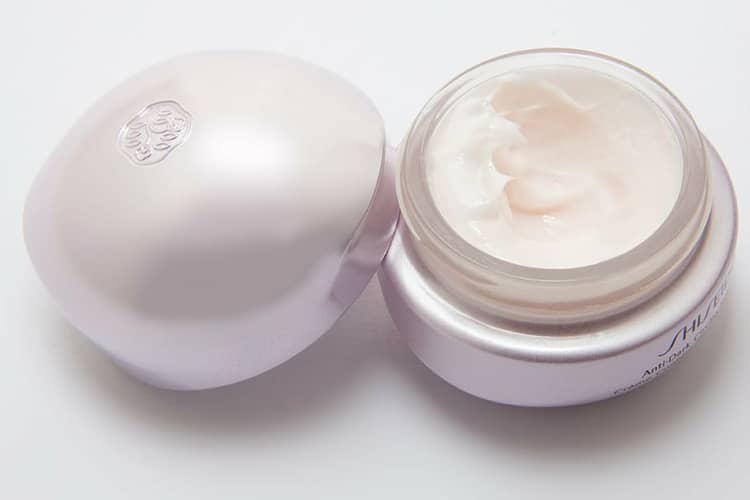
With retargeting ads, you can significantly increase your conversion rates.
Retargeting ads help you to reach people who already have an interest in your beauty products. You can show your ads to your past website visitors on Facebook and Instagram and lure them back to your website. You can even target users who visited a specific landing page with a personalized message.
Here are the basic steps you need to follow to run retargeting ads on Facebook or Instagram.
- Install the Facebook pixel so Facebook can track your website visitors.
- Create Custom Audiences based on your website’s traffic.
- Segment ads for different products based on their landing pages’ URLs.
- Prepare your ad creatives.
- Launch your ads and count your sales!
PRO TIP: Run brand awareness ads in the background so you’d have a constant flow of people to remarket to.
There’s one thing though – running great ads takes time and effort.
If you’ve ever opened Facebook’s Ad Manager or tried to bid on the right keywords with Google Ads, you know what we mean. You can read our blog post on Facebook advertising for beginners to get you started!
But, what do you do if you want to scale your online store NOW and you don’t have the time to spend three months learning paid advertising?
The answer is automated ads.
Let someone else run targeted ads for you while you take care of your dropshipping business.
With sixads, you can have your ads up and running on Facebook, Instagram, and Google in minutes! Have a Shopify store? Check out our app here.
Start selling instantly!
If you want to grow your beauty brand organically, too, we’ve tons of tips on how to promote a skin care business - keep on reading!
4. Base your skincare product marketing strategy on content
With a relatively low entry threshold, thousands of aspiring entrepreneurs are thinking of dropshipping skincare products. How do you stand out in the beauty industry? The answer is skincare content marketing.
A. Start a blog
Attract your customers with solutions to their skin problems!
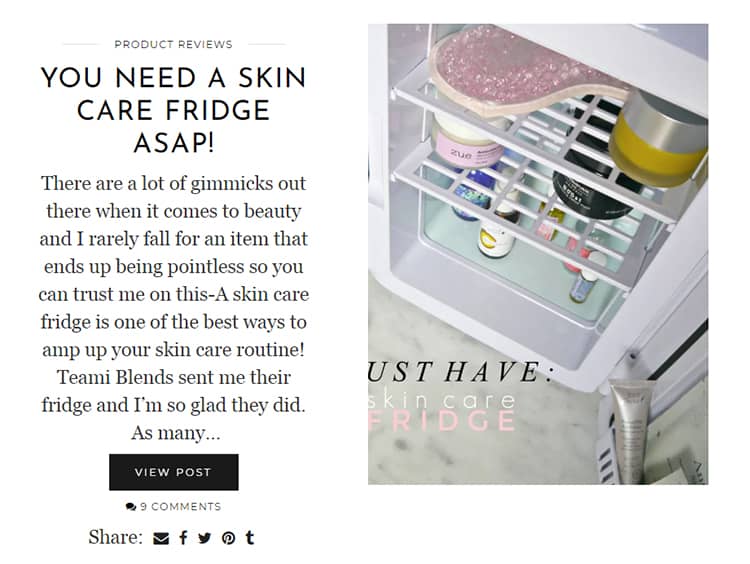
Brands that educate their customers on their daily skincare routine build trust much quicker than those that ignore content creation. We understand that blogging can sound a bit overwhelming. But you don’t need to post a new article every day – you’re not a newspaper!
Your beauty brand strategy should be to post consistently, not excessively. And, with your keywords list, you already know what your potential customers want to know. Write about it!
Make sure to create informational content that is not overly salesy. Give genuine advice on skin care. Include guest posts from influencers in your niche to stay relevant and up-to-date. If people trust your content, they will trust your new products, too!
Most importantly, remember that each blog needs to lead your customers somewhere. Don’t forget to include powerful call to action phrases in each piece!
B. Talk about ingredients
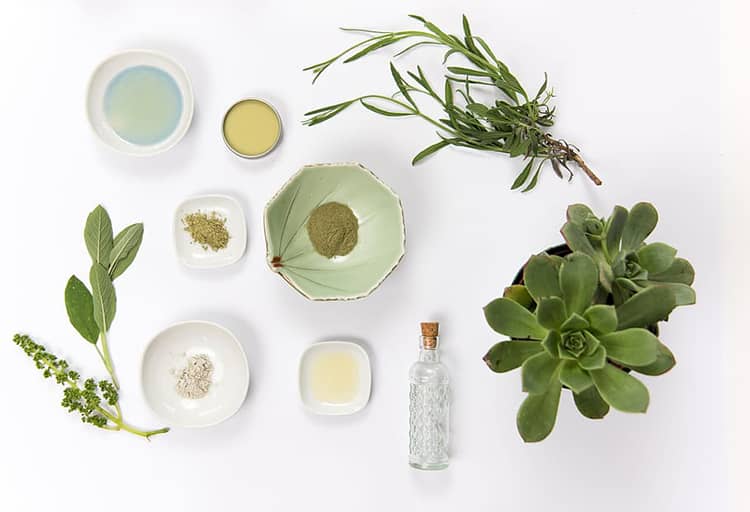
Skincare customers are picky consumers. They tend to take their time to do their research before making a purchase, especially if they have some skin issues they want to fix. So, if your skincare products have quality ingredients (and, ultimately, they should), make sure to stress that in your content.
- Polish your product descriptions. Highlight the best ingredients and their effect on the skin. A great product description doesn’t just promise great results. You need to explain why and how a particular product can help customers cleanse the skin or smooth fine lines.
- Create a quiz. It should let your customers find the best products for their skincare routine. In the answers, explain how certain ingredients can bring the wanted results.
- Make a glossary. List and explain the skincare ingredients used in the products you sell. Make sure to highlight ingredients that are natural or hypoallergenic, people love to see those!
C. Showcase your customer reviews
Advertising skincare products gets so much easier when consumers are saying great things about your brand. That’s why you should reach out to your loyal fans to get product reviews.
Use those testimonials on your website and ads, post them on your social media accounts. There’s nothing more effective than a happy customer sharing how your face cream helps the skin stay hydrated throughout the day!
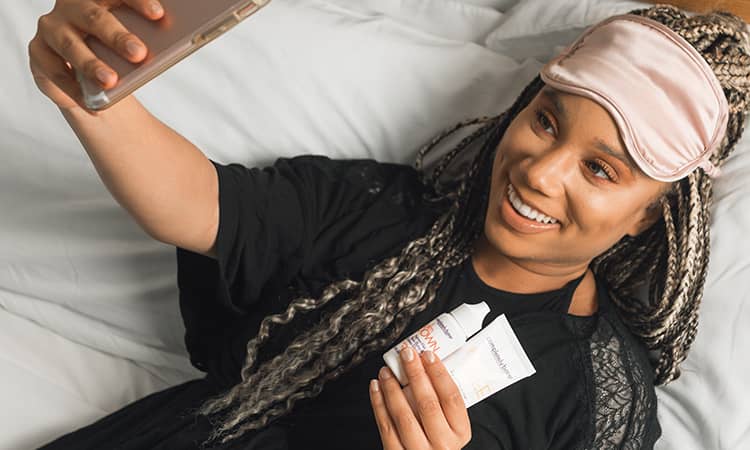
5. How to promote skin care business on Instagram
The nature of Instagram makes it a natural choice to advertise skincare products. It’s one of the most visual social media channels where digital marketing for cosmetics and other beauty products prevail. Here are the main tips to follow to get your share of the market.
Work with micro-influencers

If you’re just starting your skincare business and don’t have loyal customers who could write you a positive review or send before and after videos, don’t worry! You can try influencer marketing instead.
We recommend working with micro-influencers (someone with a following between 1,000 to 100,000 people) instead of going after the big names.
For one thing, micro-influencers usually have a highly-engaged following in a specific niche. For another, their content tends to be more authentic and looks trustworthy. Plus, it’s much cheaper, so you can afford it even when your skin care Shopify store is still just your side hustle.
So, where do you start?
There are plenty of free tools that can let you find influencers in your niche – just run a quick Google search and press on any article that lists free tools.
Once you’ve shortlisted the best micro-influencers for your skin care marketing strategy, contact them. Find out which of your products they’re most interested in, send them those items, and ask for a review in return.
Here’s a great example of a collaboration with a micro-influencer.
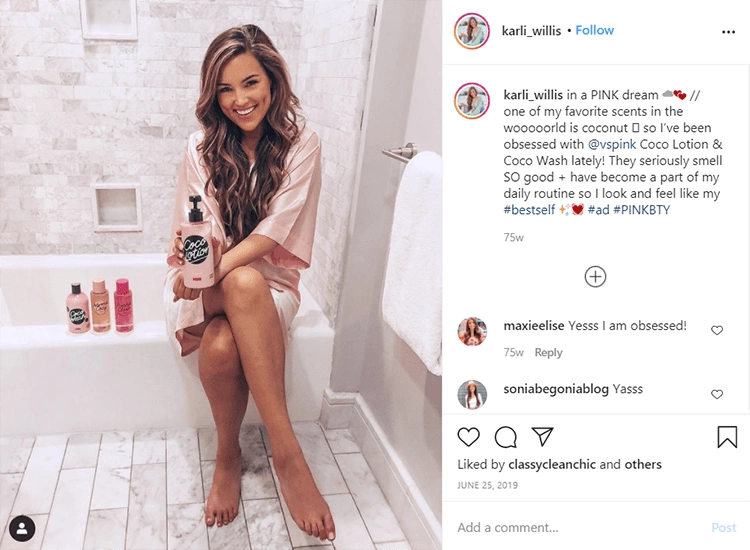
Karli Willis has about 45k followers, making her an average size micro-influencer. If you look at the original post on her Instagram account here, you can check how many comments this ad received. Her followers LOVED IT! Beauty marketing done right.
Include User Generated Content (UGC)
79% of people say UGC highly impacts their purchasing decisions. Use it to your advantage on your social media!
Cosmetics brand Lush does a great job putting their clients at the front of their branding on Instagram.
For example, the UGC post below looks genuine and spreads happy vibes. Makes you want to try Lush products now!
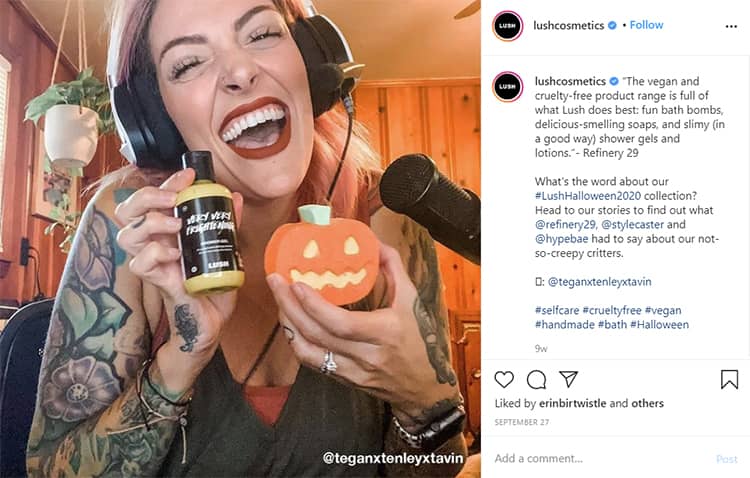
How to promote skin care business with UGC on social media:
- Encourage your customers to share their experience with your products on their Instagram feed posts and stories.
- Come up with your branded hashtag, e.g., #[yourbrandname]tribe.
- If you don’t get a lot of traction initially, use incentives, such as discounts for the next purchase.
- Create contests around traditional and social media holidays, just like Lush did with Halloween for their target market. UGC is great for introducing new products.
No time for complex strategies? Start selling on Instagram in minutes with sixads!
Best Facebook ads for beauty products to get you inspired
With so many beauty products in the market, you need to run effective advertising campaigns to be noticed by consumers. Below, we’ve gathered a few great examples of how you can use Facebook ads to stand out in social media and drive sales.
1. Glossier: showcase your bestsellers
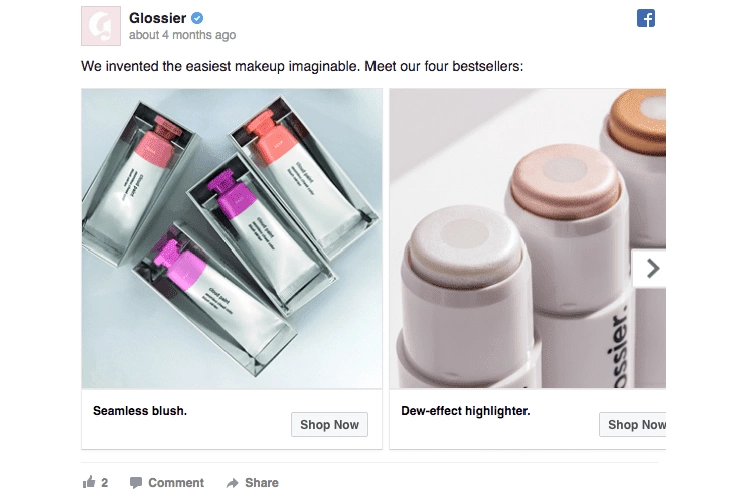
Bestsellers are always enticing! If a lot of people are buying something, it must be good? Feature your most popular skincare products in your carousel ads. Use close-ups and play around with colors, bring attention to detail.
2. Sephora: use video to drive engagement
Videos are great! They immediately draw your attention when you see them in your feed. In this ad, Sephora used the canvas format. It ensures that the right users see the most relevant products from Sephora’s catalog.
3. Philosophy: lure consumers with free samples!
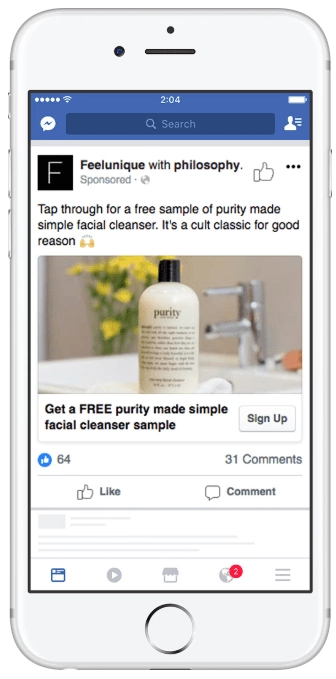
Who doesn’t like free samples? They are one of the best parts of buying something in an actual brick-and-mortar skin care store. The beauty brand Philosophy ran a brilliant Facebook ad where they offered to get a free sample of their facial cleanser. They generated more than 9,000 leads!
Key Takeaways
Here are the main things you need to remember about your skin care marketing strategy:
- Selling to everyone is selling to no one. Narrow down your skin care target market and focus on their needs.
- Find out what your potential clients want with keyword research.
- Work on content marketing. Write educational blog posts to build trust in your brand.
- Stock photos never look convincing – be serious with your product photography.
- Work with micro-influencers to reach your niche audiences.
- Use UGC to turn your customers into your brand advocates.
- Advertise your skincare products to maximize your sales.
Want more ideas? Check these 4 e-commerce case studies to motivate you!



